- SAE India
- ADAS
- Vehicle Dynamics
- Global Automotive Research Centre
- GARC
- ICAT
- Maruti Suzuki India
- ATS
- GARC
- AB Dynamics
- Tenneco
- JK Tyre
- 4active
- Applus IDIADA
- ZF
- Stahle
- CEAT
- Applied Intuition
- Rane
- Gabriel
- Continental
- MRF
- OXTS
- Kiriu Corporation
- Motoring Trends
- Vivek Trivedi
- Dr. Subramaniam K
- Ashok Leyland
- Renji Issac
- Dr Ramadhan Sakuthalai
- Amrita University
- Amardeep Singh
- Dr Peter Pfeffer
- Mydnamics
- ANiruddha Reddy
- Applied Intuition
- Piyush Ghongade
- Jagdish Chauhan
- Dr Roshi John
- RoshAI
- Dr Rajesh Megalingam
- AB Dynamics
- Vipul Dave
- Rane Brake Lining
- Nisshinbo Brake
- Balaji Lenin
- Michninari Ishikawa
- Jojo Chacko
- Vector
- Raunak Santosh
- IDIADA
- Sunil Patil
- ZF India
- K Rajrajeswari
- S Perumal
- Cederic Asselineau
- Stahle
- Steve Boyle
- Moshon Data
- Prakash Abhayanker
- 4active Systems
- Rejin Sathianesan
- Bosch
- Bob Rupani
- Balasubramanian N
- Renault Nissan Technology & Business Centre
- Nagarajan
- SAE India
- Ramanathan
- SAEINS
- ATS
- Hari Krishnan
- MIC-IV
- Nilesh Wadhwa
- Motoring Trends
Motion In Control 2025 Vehicle Dynamics & ADAS Conference Concludes On A High Note
- By MT Bureau
- February 10, 2025
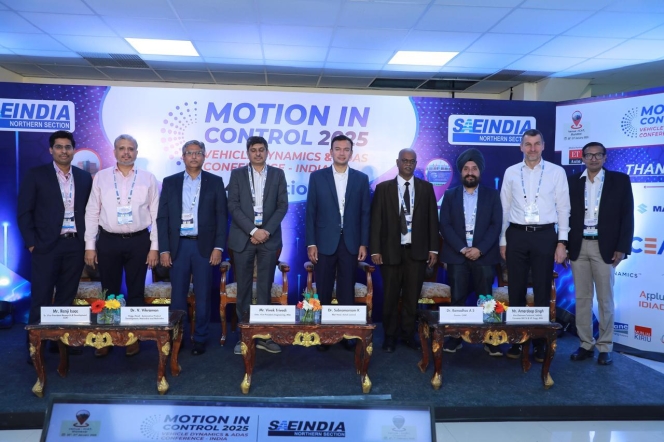
The automotive industry is undergoing one of its biggest disruptions ever, what’s with consumer demand, government policies and the latest technology making their way into the vehicles of tomorrow.
To bring forth discussion and ignite conversation around the topic of Vehicle Dynamics & ADAS (Advanced Driver Assistance Systems), SAEIndia Northern Section recently held a two-day seminar ‘Motion In Control-IV 2025’ on 6 February 2025. It featured presentations, live demonstrations and a panel discussion, at Global Automotive Research Centre (GARC), Chennai.
The event was supported by ICAT, Maruti Suzuki India, ATS, GARC, AB Dynamics, Tenneco, JK Tyre, 4active, Applus IDIADA, ZF, Stahle, CEAT, Applied Intuition, Rane, Gabriel, Continental, MRF, OXTS and Kiriu Corporation. Motoring Trends was the official media partner for the event.
It brought together industry experts from automakers, component manufacturers, testing equipment manufacturers and even educational institutions to discuss, debate and plan the way forward.
It is no secret that various factors such as consumer awareness, innovative technologies and regulatory push are enabling automakers to incorporate various sensors and AI-enabled tech such as ADAS to become a common sight.
What’s more, while these technologies are quite popular in developed markets, they cannot be simply copied-pasted in India; the adoption is not quite so simple.
The two-day open platform brought forth industry experts to share their views on how conventional vehicle dynamics solutions are paving the way for sensor-based technologies. This not only makes the vehicles safer but also opens the doors for new ways to look at vehicle design, validation and even certification for India-specific challenges.
Day 1
The first day of the event saw Vivek Trivedi, Executive Vice-President – Engineering, Maruti Suzuki India share his views on the topic of ‘Insight of Future Technologies in India related to Vehicle Dynamics & ADAS’.
Dr. Subramaniam K, R&D Head at Ashok Leyland gave a presentation on ‘Vehicle Dynamics in EV: Advantages and Challenges’.
Renji Issac, Senior Vice-President Research & Development, CEAT presented his views on ‘Tyre development in a virtual world’.
Dr. V. Vikraman, Senior Vice-President, Research & Development, Mahindra & Mahindra, gave insights on how the automaker was using the latest technology and tools for development of its high-performance SUVs.
Dr. Ramadhas Arumugam Sakuthalai, Director, GARC, spoke about how Indian testing agencies were prepared to support the automotive industry for their testing needs when it came to Vehicle Dynamics and ADAS solutions.
Amardeep Singh, Vice-Chair, SAEINS and Convenor MIC-IV, and VP – Engineering, Maruti Suzuki India set the context for plenary sessions.
This was followed by Dr. Peter Pfeffer, CEO, Mdynamics presenting his thoughts on ‘Advance Driving Characteristics Development Through Performance – HIL (Hardware in Loop) and Driving Simulator.
The audience also got to understand on what was happening in the field of validation and release of L2/L3 ADAS at scale by Aniruddha Reddy, Head of Sales EMEA & India, Applied Intuition.
In a joint presentation, Piyush Ghongade, Head- Vehicle Dynamics, CEAT and Jagdish Chauhan, Team Lead – NVH, 4W, CEAT spoke about the ‘Role of Vehicle Dynamics in Advanced NVH Tyre Tuning: Challenges and Solutions.’
Dr. Roshi John, Founder & CEO, RoshAI introduced the company’s approach towards self-driving vehicles.
Dr. Rajesh Kannan Megalingam, Associate Professor, Department of Electronics & Communication Engineering, School of Engineering, Amritapuri, gave a presentation on ‘Exploring Autonomous Vehicle Scenarios in Indian Roads: Smart Centre Case Studies’.
The last session of the day saw Vipul Dave, Senior Business Development Manager – UK, Greater Europe & India AB Dynamics give his perspective on Future Trends in ADAS Testing.
Balaji Lenin, General Manager, Rane Brake Linking and Michninari Ishikawa, Manager, Nisshinbo Brake, spoke about the Brake friction material for advanced vehicle technologies.
Jojo Chacko, Technical Product Expert, Vector, spoke about ‘Addressing Challenges in Vehicle Dynamics for ADAS’.
Raunak Santosh, DGM Head – Chassis & Active Safety, IDIADA gave a presentation on ‘Vehicle Dynamics – In the age of new Technological Revolution.’
Day 2
The second day of the event saw Ms. K Rajrajeswari, Senior Engineer, GARC and S Perumal, Manager, GARC gave a presentation on Vehicle Dynamics & ADAS Testing Solutions at GARC.
Sunil Patil, Director Engineering, ZF India spoke about the ‘Scalable ADAS Systems for Emerging Markets’.
Prof C Lashmikanathan of Amrita School of Engineering, brought in the academic perspective on how educational institutions were accelerating vehicle dynamics development using modern test environment and tools.
Cederic Asselineau, Business Development Manager, Stahle, spoke about the evolution in Robotics and Software for human driving style imitation.
Steve Boyle, MD, Moshon Data, shared his view on ADAS & lack of knowledge surrounding it with everyday users.
Prakash Abhayanker, Head India Operations – 4active Systems brought in his perspective on what the Future of ADAS Testing meant for the company.
Rejin Sathianesan, Senior Technical Expert, Bosch gave a presentation on Securing ADAS: ‘Protecting the future of ADAS system’.
In the last session for the event, a panel discussion took place on the topic of ‘Navigating the Future: Bridging ADAS and Vehicle Dynamics for Smarter Driving’. The panellists included – Bob Rupani, Veteran Auto Journalist; Balasubramanian N, VP – Product Engineering, Renault Nissan Technology & Business Centre in India; Nagarajan, Vice-President, SAE India; Ramanathan, Vice-Chair, SAEINS & MD, ATS and Hari Krishnan M, Co-Convenor MIC-IV & Senior GM, Engineering, Maruti Suzuki India. A range of topics were discussed ranging from how automakers and suppliers had to make the latest technology work in India but also making it more robust and affordable. The panel was moderated by Nilesh Wadhwa, Assistant Editor, Motoring Trends.
The event also saw partner organisations give demonstrations on technologies such as – Automated Emergency Braking (AEB), self-parking technology, automatic braking and cruise control among others.
MapmyIndia And Zoho Announce Integration For CRM Users
- By MT Bureau
- November 26, 2025
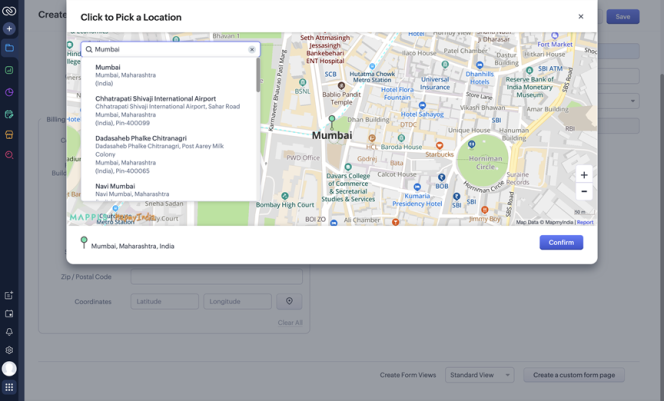
MapmyIndia Mappls, a digital mapping and geospatial technology company, and Zoho, a technology company, have announced a collaboration to integrate two MapmyIndia features directly within Zoho CRM. The features being integrated are Address Capture and Nearby Lead Finder.
The integration allows Zoho CRM users to: capture verified addresses, visualise customer locations, discover potential leads in nearby areas and optimise sales routes. These functions are powered by MapmyIndia’s mapping platform.
Rakesh Verma, Co-Founder, Managing Director & Group Chairman, MapmyIndia Mappls, said, “This partnership between MapmyIndia and Zoho is a true blue Swadeshi celebration – two Indian innovators and leaders in their respective fields - coming together to deliver cutting-edge, homegrown technology that is world-class. MapmyIndia Mappls Address Capture and Nearby Lead Finder capabilities will help Zoho CRM users across India to work smarter and sell better, while keeping all data and innovation safe within India. I am confident that this partnership will boost collaborations amongst Indian tech companies creating a sympathetic ecosystem towards the realisation of an Atmanirbhar, Viksit Bharat.”
Mani Vembu, CEO, Zoho, said, "At Zoho, we believe that true technological progress begins with self-reliance. Building deep-tech R&D from India has always been one of our foundational pursuits, driven by the immense talent and creativity that thrive in the country. Our partnership with MapmyIndia embodies this vision, uniting homegrown expertise in business software and digital mapping to deliver solutions that are powerful, privacy-focused and proudly indigenous. This integration empowers Indian businesses by combining business intelligence with spatial intelligence, giving field teams the location-aware insights they need to better serve their customers."
Toyota Kirloskar Motor Opens Experiential Museum In Bengaluru
- By MT Bureau
- November 24, 2025
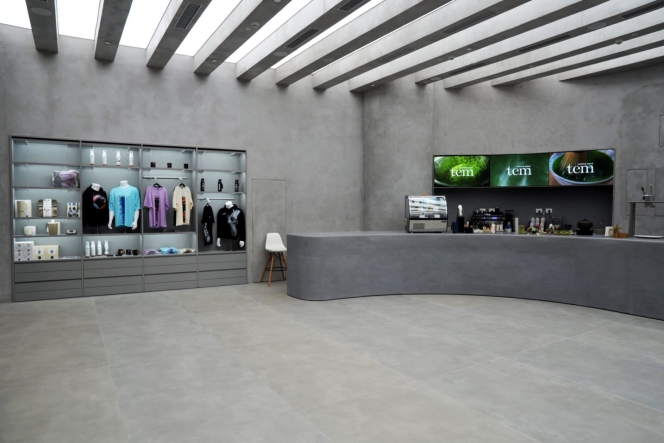
Toyota Kirloskar Motor (TKM) has unveiled the Toyota Experiential Museum (TEM) in Bengaluru, which it said is a new cultural and lifestyle hub for the company. The space combines Indian philosophy with Japanese culture and technology.
Located on the ground floor of the Phoenix Mall of Asia, TEM is spread across 8,200 sq ft and offers a five-senses experience, blending Japanese minimalism with Indian warmth through visuals, sounds, scents, textures and flavours.
Tadashi Asazuma, Deputy Managing Director, Toyota Kirloskar Motor, said, “At Toyota, our vision of creating ‘Happier Paths Together’ goes beyond mobility – it is about inspiring experiences that connect people, cultures, and emotions. With TEM, we hope to offer a truly unique experience that embodies this spirit.
In India, we found inspiration in the practice of Sadhana – the mindful pursuit of inner balance and fulfilment. TEM is where the Japanese culture and values of precision, serenity, and respect for nature beautifully align with the spirit of Sadhana, making TEM a meaningful blend of both. Designed to engage the senses and spark reflection, it brings together art, technology, and craftsmanship to inspire mindfulness, especially amongst the youth.”
The museum features minimalist interiors and distinct aesthetics designed to spark curiosity, inviting guests to explore at their own pace. The journey begins with a mirrored and rhythmic experience of the changing seasons common to Japan and India, unfolding through infinite projections of light, colour and motion. It then rises into a celebration of shared passion, featuring an audio-visual collaboration with DRUM TAO. A display includes a water curtain encircling a car draped in satin.
A design cafe offers a range of merchandise blending heritage with contemporary lifestyle, celebrating simplicity and craftsmanship.
The TEM cafe features a curated menu that blends the Japanese tradition of matcha with Indian flavours. Highlights include the India-inspired mango infusion.
- Maruti Suzuki India
- Maruti Suzuki Innovation Fund
- Ravity Software Solutions
- Sociograph Solutions
- Amlgo Labs
- Hisashi Takeuchi
- Vikas Rungta
Maruti Suzuki India Invests INR 20 Million In Ravity Software Solutions
- By MT Bureau
- November 21, 2025
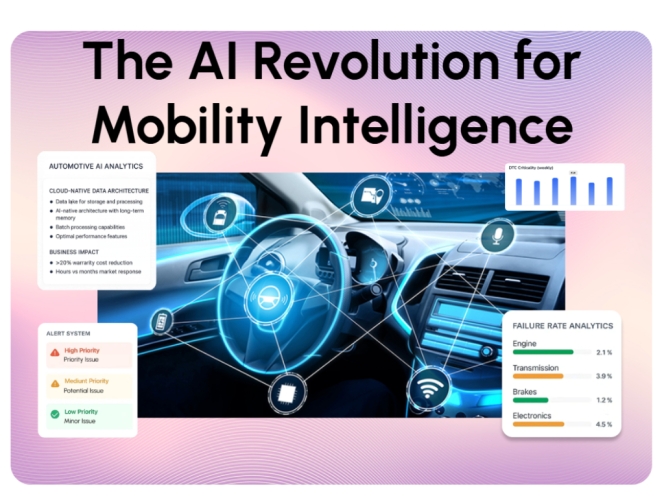
Maruti Suzuki India (Maruti Suzuki) has announced an investment of nearly INR 20 million to pick up 7.84 percent stake in Bengaluru-based mobility insights start-up Ravity Software Solutions. The start-up claimed to be a global platform for AI-driven connected mobility intelligence, which transforms vehicle data into business value.
This marks the automaker’s third such move through ‘Maruti Suzuki Innovation Fund’, which makes strategic investments in innovative and high-potential start-ups that can support Maruti Suzuki India’s operations.
The company made its first investment of INR 20 million in Sociograph Solutions in June 2022, followed by the same amount in Amlgo Labs in March 2024.
Hisashi Takeuchi, Managing Director & CEO, Maruti Suzuki India, said, “Aligning to our core value of keeping customer at the core of our business, we are focused on enhancing vehicle ownership experience. In the age of open innovation, we strive to co-create business solutions with specialized entities operating in the particular field. Startups are ideal partners as they bring agility, fresh thinking, and cutting-edge solutions, to support our goal of ensuring customer delight. Our investment in Ravity Software Solutions will enable us to elevate customer experience through data-driven insights. We have been associating with startups since 2019 under our Maruti Suzuki Innovation programs. Through this initiative, we are investing in a culture of innovation, building strategic partnerships, and unlocking new opportunities, in line with Government’s ‘Startup India’ initiative to promote entrepreneurship in the country.”
Vikas Rungta, Founder, Ravity Software Solutions, said, “It is an honour to be associated with an industry leader like Maruti Suzuki, whose name is synonymous with bringing personal mobility to millions in India as well as across the globe. An automobile major like Maruti Suzuki partnering with a startup speaks volumes about its forward-thinking mindset, humility, and openness to learn and collaborate to explore new ideas. With our excellence and expertise in AI, analytics and mobility, we are committed to upholding the trust Maruti Suzuki has placed in us. We believe that the high complementarity of our strengths: Maruti Suzuki’s scale of business and our agility and entrepreneurship, will further enhance customer experience and delight.”
LG Display Wins Two CES 2026 Innovation Awards For Automotive Display Technology
- By MT Bureau
- November 21, 2025
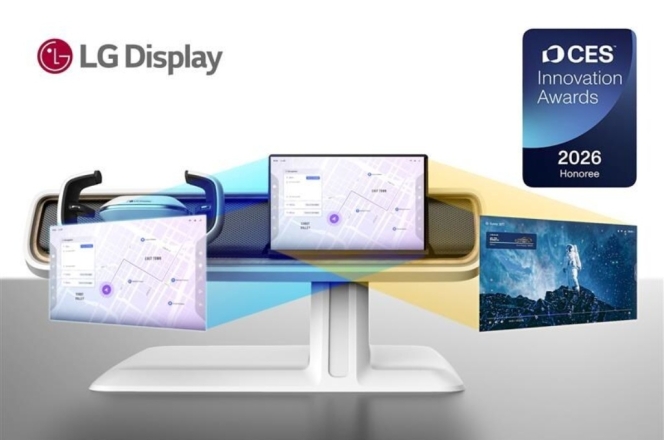
LG Display has secured two CES 2026 Innovation Awards from the Consumer Technology Association (CTA) for two automotive display innovations: Dual View OLED and Under Display Camera-infrared (UDC-IR) OLED.
Both products were honoured in the In-Vehicle Entertainment category for delivering space efficiency, superior picture quality and high standards of safety.
The Dual View OLED solution allows a single automotive display to show different content based on the viewing position. For example, the driver can view navigation while the front passenger streams content. Optimised pixel structure ensures the driver’s touch operation does not interfere with the passenger’s entertainment. The product utilises a Tandem OLED device structure for picture quality and operates reliably in environments ranging from -40deg C to 85deg C.
The UDC-IR OLED jointly developed with LG Innotek, is claimed to world’s first full-screen automotive display to conceal an in-screen driver-monitoring camera. LG Display developed advanced algorithms that make the camera hole invisible from the driver’s viewpoint. The camera integrates LG Innotek’s high-resolution IR camera and image-enhancement software to ensure accurate driver monitoring, which is becoming mandatory due to global safety regulations.
LG Display will showcase these solutions at a dedicated booth at CES 2026. The company has consistently won CES Innovation Awards, previously honoured for its Thin Actuator Sound Solution (CES 2023) and its 57-inch Pillar-to-Pillar LCD (CES 2024).






Comments (0)
ADD COMMENT